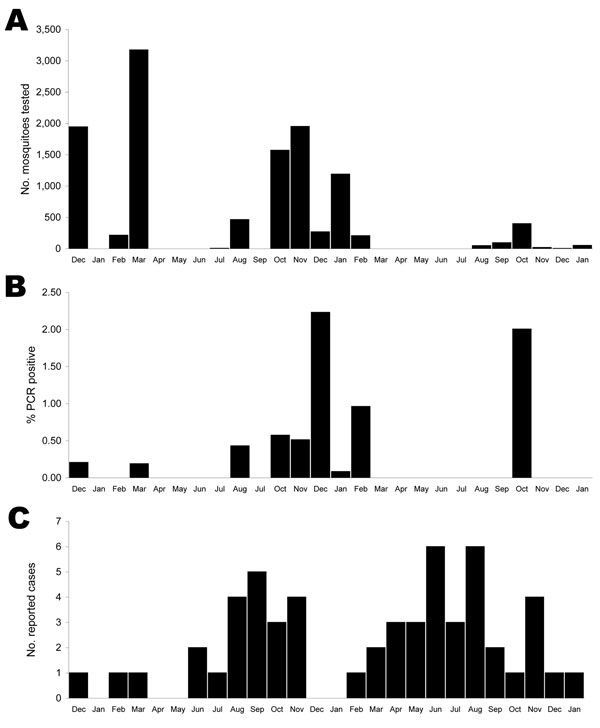Volume 13, Number 11—November 2007
Research
Mycobacterium ulcerans in Mosquitoes Captured during Outbreak of Buruli Ulcer, Southeastern Australia
Appendix Figure

Appendix Figure. Relationship between reporting of cases of Buruli ulcer (BU) and mosquitoes tested from Point Lonsdale, Australia, December 2004-January 2007. Increased mosquito activity in spring and summer (September-February) appears to be followed by a wave of new reports in autumn and winter (March-August). A) No. mosquitoes tested by month at Point Lonsdale (traps were not set when local reports suggested low mosquito activity). B) Proportion of tested mosquitoes positive by PCR for Mycobacterium ulcerans by month. C) No. of new cases of BU epidemiologically linked to Point Lonsdale by month.
Page created: July 05, 2010
Page updated: July 05, 2010
Page reviewed: July 05, 2010
The conclusions, findings, and opinions expressed by authors contributing to this journal do not necessarily reflect the official position of the U.S. Department of Health and Human Services, the Public Health Service, the Centers for Disease Control and Prevention, or the authors' affiliated institutions. Use of trade names is for identification only and does not imply endorsement by any of the groups named above.